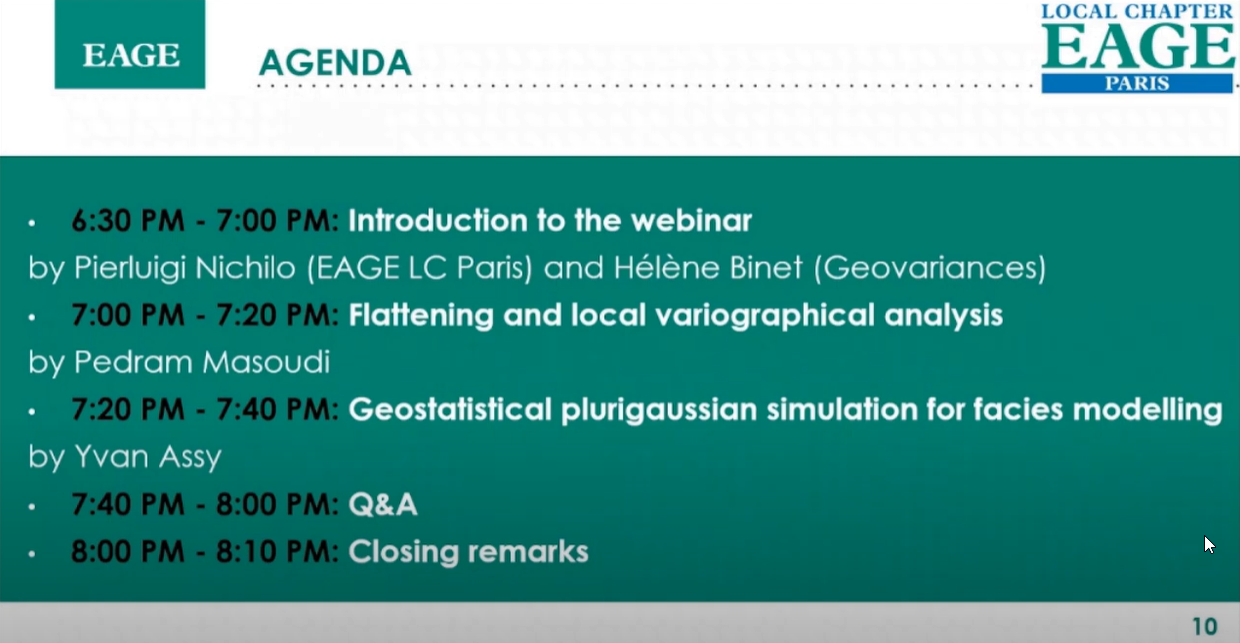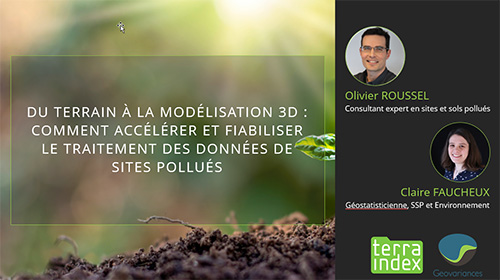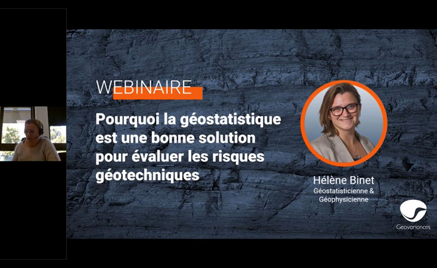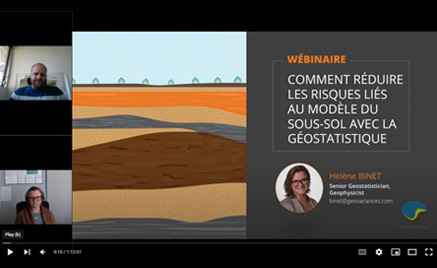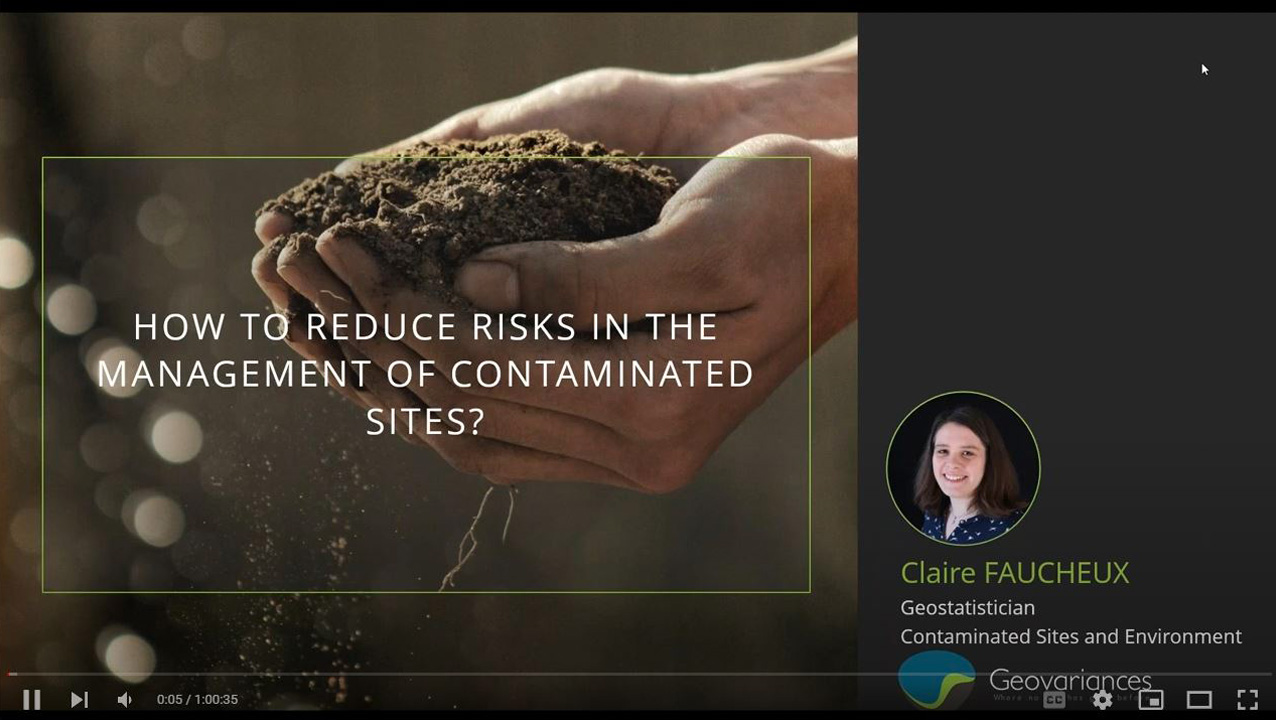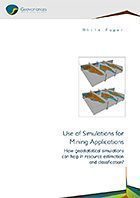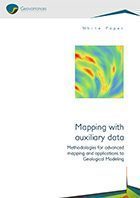Consulting and mentoring services based on high level geostatistics
Geovariances provide consulting and mentoring services worldwide, mainly to the Mining, Energy, Nuclear Decommissioning, Contaminated Sites, and Geotechnical engineering industries, but not only. Our versatile team of consultants combines their extensive experience in using our software and Python with their high level of geostatistics and data science expertise to find innovative solutions to your specific issues.
Their professionalism and flexibility allow them to deliver relevant, practical, and rigorous consulting solutions quickly. Their software experience and industry knowledge help them choose the most suitable methods and tools to process your data properly, deliver controlled and safer models and optimize the results that help your decision-making process. In addition, they have extensive knowledge of communication requirements worldwide and are qualified to prepare independent technical reports in many international jurisdictions.
Mining
We help you improve production and economic performance.
Our services include:
– Geological and metallurgical domain definition using machine learning techniques,
– Resource estimation and classification (according to NI 43-101 and JORC, among others),
– Optimization of short, medium, and long-term estimates,
– Recoverable resource estimation (estimation of tonnage, metal quantity, and grade above chosen cutoffs) and SMU modeling,
– Resource uncertainty characterization,
– Drill hole spacing optimization.
Contaminated Sites and Nuclear Decomissioning
We help you design more effective remediation and decommissioning scenarios.
Our services include:
– Detailed data analysis and quality control and delivery of critical statistics,
– Optimization of investigation density and location,
– Delimitation of contamination sources and concentrated pollutions,
– 3D modeling of deep contamination
– Quantification of masses of contaminants and volumes of soil to be treated according to remediation thresholds,
– Classification of contaminated areas and wastes with a quantified risk analysis,
– Optimization of waste treatment routes,
– Sizing of management solutions (mass balance, cost-benefit balance, excavation maps, etc.).
Geotechnical engineering
We help you improve your understanding of ground conditions and better handle risks.
Our services include:
– 3D modeling of the geology and geotechnical parameters,
– Subsurface variability characterization,
– Geotechnical risk characterization with the delivery of several scenarios (for example, of the parameters measuring the geomechanical constraints or soil deformation),
– Modeling of aquifer geometry,
– Optimization of measurement networks.
Oil and gas
We help you assess better the economic viability of your project.
Our services include:
– Filtering of acquisition or processing artifacts in seismic cubes,
– Merging of seismic cubes,
– Time-to-depth conversion,
– Definition of stratigraphic units,
– Lithofacies and geology modeling,
– Assistance in petrophysical and geomechanical modeling,
– Geobodies connectivity analysis,
– Identification of spill points and delineation of potential reservoir traps,
– Production of various scenarios of potentially recoverable resources and gross rock volumes.
Air, water, soil, bioresources, and other sectors
We help you reveal the information behind your data.
Our services include
– Air quality monitoring: mapping of pollutants, air quality indices or population exposure to air pollution, optimisation of measurement networks.
– Bathymetry: seabed mapping, uncertainty analysis.
– Bioresources (forestry, fishery, ..): stock assessment, health risk evaluation.
– Precision agriculture: yield mapping, identification of homogeneous areas.
– Any sector dealing with spatial data, i.e. climatology, geochemistry, epidemiology, archaeology: mapping, risk analysis.
Automation, customization and review of workflows
We help you be more efficient with our software solutions and quickly deliver the results your company expects.
Our services include:
– Automation of estimation routines,
– Optimization of estimation parameters,
– Review and optimization of your current process,
– Converting routines from Isatis or other software to Isatis.neo,
– Building and delivery of workflows using Isatis.neo and Python packages,
– Mentoring to assist you in setting up your workflow based on your data and objectives.
Hear from our clients
Some of our achievements
-
MiningYamana
Automation of a resource estimation workflow using Python and batch coding.
KNSKoniambo Nickel DepositRecoverable Resource Estimation using Multivariate Direct Block Simulation
BHPOperating Coal MineBenchmarking local uncertainty characterization using kriging variance, DHSA and conditional simulations
-
Oil and GasWoodside
Filtering and merging of velocity cubes
RepsolCharacterization of a stochastic inversion
Circle OilCharacterization of seismic data with connectivity criteria
-
Nuclear DecommissioningCEA, FranceMarcoule
Estimation of contaminated soil amounts and contamination levels and geological and underground-layers mapping.
Onet Technologie, FranceGeostatistical deconvolution to
find and locate punctual sources.Framatome, FranceMetallographic characterization by variographic analysis and geostatistical simulation of local segregation microstructures.
Resources
-
Isatis.neo – Reveal the true nature of the subsurface. Gain a reliable understanding of subsoil structure and heterogeneity | Integrate geostatistics into your modeling workflow to uncover deeper insights, reduce uncertainty, and make smarter, risk-informed decisions with confidence.
-
Kartotrak – Improve contaminated site diagnosis and optimize remediation and decommissioning plans with geostatistics | Optimize sampling campaigns and save on costs. Improve contamination characterization, whether chemical or radioactive. Balance remediation efficiency and waste volumes and make the best decision.
-
Consulting services for the mining industry
-
Application de la géostatistique dans l’analyse de risque géotechnique lié à la liquéfaction du sol (vidéo) | Gestion des Données et Nouvel Environnement numérique en Géotechnique - Journée technique CFMS 15 nov 2022
-
Methodology for the Estimation of Contaminated soil by a Geostatistics-based method | WM2023 - E. Moreno (CEA Marcoule), Y. Desnoyers (Geovariances), I. Bisel (CEA Marcoule) and P. Marty (CEA Marcoule)
-
Utilisation d’un algorithme de classification par Machine Learning pour la caractérisation géomécanique des sols | CFMS 2020 - par Marie-Cecile Febvey
-
Contributions of the CETAMA working group n°10 on sampling and radiological characterisation (poster) | Anne Courtadon et Danièle Roudil, CEA Marcoule; Yvon Desnoyers, Geovariances; Didier Dubot, CEA; Guy Granier, IRSN; Catherine Ollivier-Dehaye, EDF
-
Geostatistical study to support sustainable remediation of a site with historical lead impact (poster) | Claire FAUCHEUX, Nicolas JEANNEE, Perrine MARTIN , Maarten CUYPERS, Annelies JACOBS
-
Uncertainty analyses for short-term planning and quality control applied to Capitão do Mato e Galinheiro mines – MG | Giulia Marina Cerqueira Dias, Dissertação de Mestrado, Instituto de Geociências, Recursos Minerais e Meio Ambiente, São Paulo, 2023
-
A novel geostatistical index of uncertainty for short-term mining plan | G. M. C. Dias, M. M. Rocha & V. M. Silva (2023) - CIM Journal, DOI: 10.1080/19236026.2022.2145077
-
Smart use of the variogram to explore spatial data, break down variance contributions and model radiological contaminations | by Yvon Desnoyers - Presented at the workshop "Statistical methods for safety and decommissioning" - Nov. 22-24, 2022 - Research Group MASCOT-NUM
-
Application de la géostatistique dans l’analyse de risque géotechnique lié à la liquéfaction du sol (slides) | Gestion des Données et Nouvel Environnement numérique en Géotechnique - Journée technique CFMS 15 nov 2022
-
Metallographic characterization by variographic analysis and geostatistical simulation of local segregation microstructures in a heavy thickness forged part in SA508 Gr3 Cl2 type steel | FONTEVRAUD 10, 2022 - Y. Desnoyers (Geovariances), P. Masoudi (Geovariances), P. Joly (Framatome), E. Deneuvillers (Framatome)
